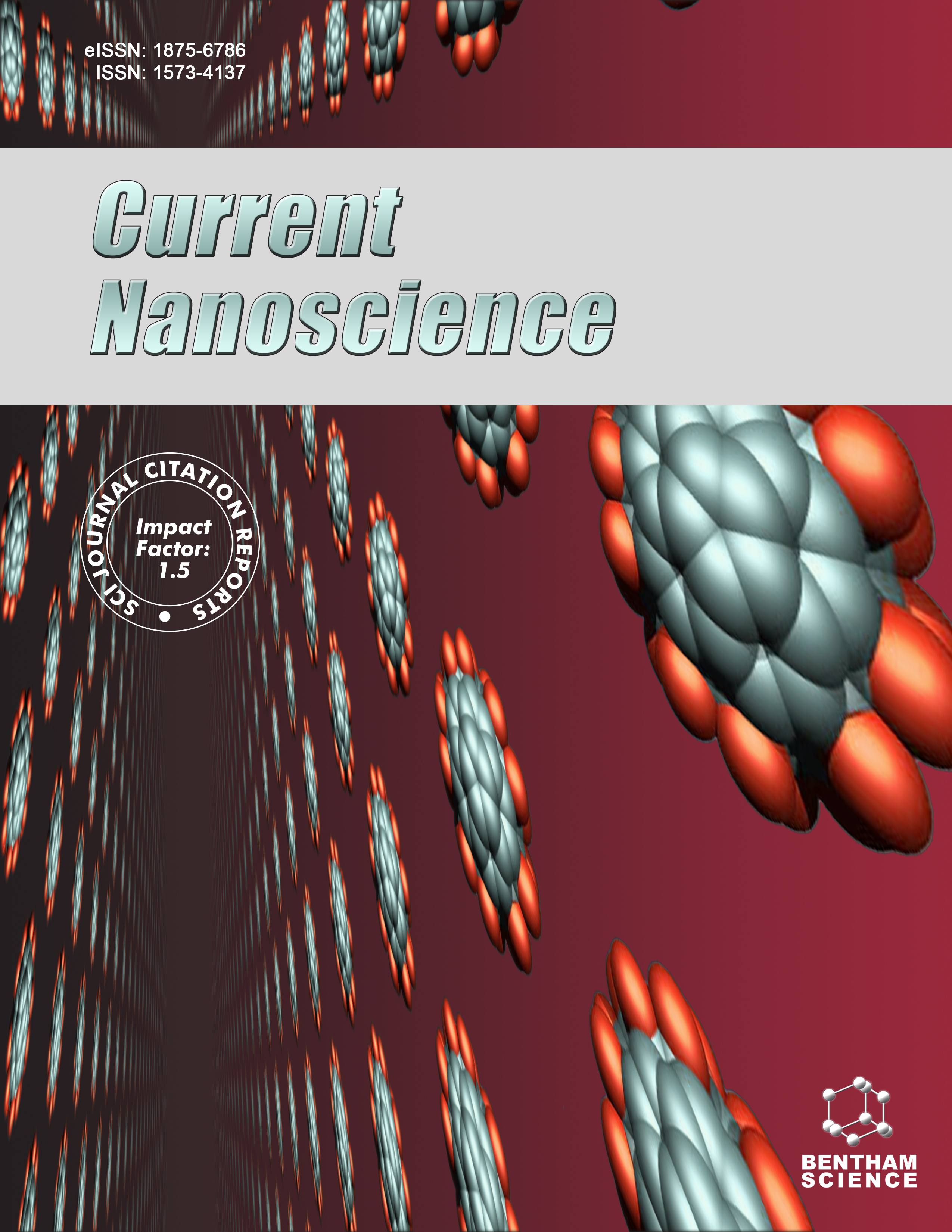- Home
- A-Z Publications
- Current Nanoscience
- Previous Issues
- Volume 15, Issue 4, 2019
Current Nanoscience - Volume 15, Issue 4, 2019
Volume 15, Issue 4, 2019
-
-
A Review on Micro-Patterning Processes of Vertically Aligned Carbon Nanotubes Array (VACNTs Array)
More LessAuthors: Mohd Asyraf Bin Mohd Razib and Tanveer SalehVertically Aligned Carbon Nanotubes array which is also sometimes labeled as carbon nanotubes forests has many applications in several engineering fields for its remarkable mechanical, electrical, optical, and thermal properties. The Vertically Aligned Carbon Nanotubes array is often employed in developing microdevices such as pressure sensor, angle sensor, switches, etc. To successfully integrate carbon nanotubes f Read More
-
-
-
Tunability of Electronic Properties and Magnetic Behaviour of Nickel Oxide: A Review
More LessAuthors: Aman D. Acharya and Bhawna SarwanBackground: Significant efforts in direction of development of smart windows with natural colour switching properties, which are in the current interest. The tailoring of the electrical conductivity as n-type and p-type is still a major challenge. In this regard, NiO has emerged as a potential candidate and auspicious functional material for various applications. Objective: The main objective is to compile the interesting findings Read More
-
-
-
Nanocellulose-based Hydrogels for Biomedical Applications
More LessAuthors: Amalnath John and Wen ZhongHydrogels are three-dimensional polymer networks capable of absorbing and holding a large amount of water. They have a wide range of biomedical applications including drug carriers, biosensors, tissue scaffolds and wound dressings owning to their innate resemblance to the living tissue. Recently biodegradable and renewable natural polymers, especially nanocellulose, have gained immense attention in the develop Read More
-
-
-
Review on Targeted Drug Delivery Carriers Used in Nanobiomedical Applications
More LessTargeted drug delivery (TDD) is an advanced and smart method of delivering drugs to the patients in a targeted sequence that increases the concentration of delivered drug only at the targeted body part of interest (organs/tissues/cells). This will in turn enhance efficacy of treatment by reducing side effects and the required dose of the drug. TDD ensures a certain defined minimally required constant amount of a therap Read More
-
-
-
Synthesis and Characterization of SnO2-TiO2 Nanocomposites Photocatalysts
More LessBackground: The photocatalytic activity of SnO2-TiO2 nanocomposites was successfully assessed after synthesis by Sol-Gel method, deposition on porous silicon material and annealing at 400, 600 and 800oC temperatures, with surface grain size in the range between 5 and 12 nm. The photocatalyst was characterized by X-ray diffraction (XRD), high resolution scanning electron microscopy (SEM), thermogravimetric anal Read More
-
-
-
Exploring the Maximum Number of the Branch Pores in each Pore Tree Applied in an Optimized Tree-type Cylindrical-shaped Nanoporous Filtering Membrane
More LessBackground: An optimized tree-type cylindrical-shaped nanoporous filtering membrane has been proposed. The performance of this membrane needs to be investigated. Objective: The study aimed to investigate the maximum number of the branch pores in each pore tree practically applied in this proposed membrane. Methods: The analysis for the flow and transport of the filtered liquid in this membrane was derived based Read More
-
-
-
The Protective Effects of Graphene Oxide Against the Stress from Organic Solvent by Covering Hela Cells
More LessAuthors: Haidi Gao, Jia-Hui Liu, Victoria Arantza León Anchustegui, Yulin Chang, Jichuan Zhang and Yiyang DongBackground: In recent years, new nanomaterials have received great attention due to their widespread use in agriculture, food safety and pharmacy. Among them, graphene and graphene oxide (GO) are emerging as promising nanomaterials, which may have far-reaching effects on pharmacy and health. Objective: In this paper, the living Hela cells were covered by GO (Hela@GO) and the cell viability, reactive oxygen Read More
-
-
-
Improved Performance of CuFe2O4/rGO Nanohybrid as an Anode Material for Lithium-ion Batteries Prepared Via Facile One-step Method
More LessBackground: CuFe2O4 nanoparticles possess good electrochemical properties apart from their inadequate electronic conductivity and large volume variation. The resulting performance lag can be modified by the addition of conductive materials to form a composite. Hence, the properties of CuFe2O4/rGO nanohybrid are presented for application as anode material for lithium-ion batteries. Methods: The composites are synthe Read More
-
Volumes & issues
-
Volume 21 (2025)
-
Volume 20 (2024)
-
Volume 19 (2023)
-
Volume 18 (2022)
-
Volume 17 (2021)
-
Volume 16 (2020)
-
Volume 15 (2019)
-
Volume 14 (2018)
-
Volume 13 (2017)
-
Volume 12 (2016)
-
Volume 11 (2015)
-
Volume 10 (2014)
-
Volume 9 (2013)
-
Volume 8 (2012)
-
Volume 7 (2011)
-
Volume 6 (2010)
-
Volume 5 (2009)
-
Volume 4 (2008)
-
Volume 3 (2007)
-
Volume 2 (2006)
-
Volume 1 (2005)
Most Read This Month
Article
content/journals/cnano
Journal
10
5
false
en


